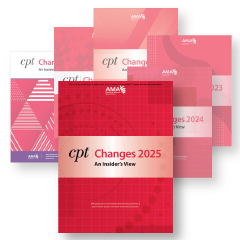by Omega Renne, CPC CPCO CPMA CEMC CIMC
Aug 5th, 2016 - Reviewed/Updated Aug 17th
Per Medicare's 1995 and 1997 documentation guidelines, "HPI is a chronological description of the development of the patient's present illness from the first sign and/or symptom or from the previous encounter to the present." The History of Present Illness (HPI) is the story that explains the progress of the condition that is leading to the patient being evaluated today. The provider of service is expected to obtain the HPI, but it can be in the patient's own words. HPI is broken out into eight elements:
1. Location is where on the patient the problem is occurring. For example: patient's carpal tunnel is worse in the left wrist.
2. Quality is describing the type of problem that is occurring. Is the problem radiating, spreading, burning, sharp, etc. For example: The back pain radiates from the neck to the lower back.
3. Severity is used to describe how intense, or severe the problem is. This can be a scale (1:10), a brief description (can hold no weight), a percentage (50% of the skin) or showing if it is improving or worsening. For example: The cellulitis has spread to cover the thigh.
4. Duration is the length of time the patient has had the problem, or could possibly represent the length of time the patient has been undergoing a specific treatment for theproblem. For example: the patient has been sick for 3 days.
5. Timing is when the problem is occurring. For example: Headache occurs upon waking and eases up around noon.
6. Context is what was occurring at the time the problem started. For example: patient fell off a ladder and hurt their back.
7. Modifying Factors are what has helped the problem, or made it worse. The best practice is to specifically state if the modifying factor made the problem improve, or made it worse. For example: Pt has headache. Took Advil with no effect.
8. Associated Signs and Symptoms are the symptoms that are occurring as a result of the underlying concern. For example: the patient's migraine has gotten so bad her vision is blurring. A completely unrelated condition or symptom may not be considered an associated sign or symptom but if the coder is not certain whether the condition may be related the provider should be given credit for the documentation.
If a patient has multiple complaints, the HPI elements can be mixed and matched between the various complaints.
Example: A patient presents with rib pain from an accident and also complains of tinnitus, for the last 6 months, that happens after running. This counts as location (rib), context (accident), duration (6 months) and timing (after running), even though "6 months" and "after running" refer to the tinnitus, not the rib pain.
It is up to the provider of service to document the HPI as specifically as possible. It is the expectation that the HPI is to be obtained and documented by the provider of service. Information obtained from ancillary staff or a form completed by the patient do not count as the HPI. Even in an electronic medical record, this is still expected to be documented by the provider. There are only two types of HPI. A brief HPI is the documentation of 1-3 HPI elements. An extended HPI is the documentation of either 4+ HPI elements, or the status of three chronic conditions that are being addressed that day.
Reference: Medicare Learning Network: Evaluation and Management Services retrieved from https://www.cms.gov/Outreach-and- Education/Medicare-Learning-Network-MLN/MLNProducts/Downloads/eval-mgmt-serv-guide-ICN006764.pdf


 Quick, Current, Complete - www.findacode.com
Quick, Current, Complete - www.findacode.com